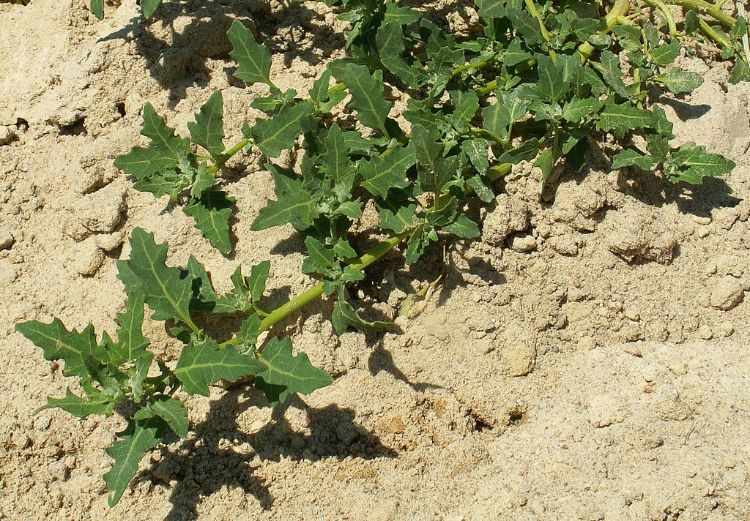Common Lambsquarters (Chenopodium album) in Christmas Tree Production- Management (Part 2)
Strategies to Manage Common Lambsquarters in Christmas Tree Production

For successful weed control, different approaches and strategies need to be adopted to keep the populations in check. It is important to apply integrated weed management strategies to avoid herbicide resistance development. As we discussed in part one of this series, proper identification is the very first step. The next step is to adopt various management options such as cultural, mechanical, and chemical weed control methods.
Management of Common lambsquarters:
Non-chemical control:
Managing common lambsquarters (Chenopodium album L.) involves a combination of cultural and mechanical practices to suppress its growth and prevent seed production. Examples of cultural management include but are not limited to fertilizer placement near the Christmas tree to limit nutrient access for lambsquarters and using cover crops to help disrupt its life cycle and compete for space and resources. Mulches are another cultural management option. Applying hardwood chips or shredded pine bark can block sunlight and suppress germination. These organic mulches need reapplications periodically. Mechanical control can include shallow cultivation or mowing prevents seed production. Combining these practices offers an herbicide-free approach to managing common lambsquarters (Chandran, 2020; Curran et al., 2021).
Chemical control:
For larger populations, herbicides specific to labeled crops can be applied. However, some biotypes of common lambsquarters in North America have developed resistance to herbicides in the triazine and ALS-inhibitor families (Group 2) (Chandran, 2020). Populations resistant to ALS-inhibitor herbicides (like Mission) have been identified in Michigan, Ohio, and Ontario (Heap, 2005). Resistance to photosystem II inhibitors (triazines, Group 5, e.g., atrazine) was first documented in the 1970s in Ontario, Canada (Bandeen and McLaren, 1979). Though not confirmed yet worldwide, there is growing concern over potential resistance to glyphosate, which would further complicate common lambsquarters management in agricultural production systems (Curran et al., 2021). If you suspect herbicide resistance screening services are available at MSU Plant & Pest Diagnostics.
Preemergence control:
There are several effective preemergence herbicides available for lambsquarter control in Christmas tree production. Goaltender (active ingredient (a.i.), oxyfluorfen, Group 14) can provide excellent control whereas Barricade (a.i. prodiamine, Group 3), Cobra (a.i. lactofen, Group 14), Gallery (a.i. isoxaben, Group 29), and Mission (a.i. flazasulfuron, Group 2) can provide good control in Christmas tree production. These herbicides work by targeting the weed during seed germination, preventing it from being established in the field.
Postemergence control:
For young actively growing common lambsquarters, postemergence herbicides provide effective control. Some of the good postemergence options are Roundup (a.i. glyphosate, Group 9), Goaltender , Garlon (a.i. triclopyr, Group 4), Frequency (a.i. topramezone, Group 27) for controlling lambsquarters in Christmas tree production. These herbicides are most effective when applied during the weed's early growth stages for optimal results (Pennsylvania State University, Department of Plant Science).
With any herbicide application it is critical to read and follow all labeled directions. Special attention should be paid to the appropriate application timing to avoid injury to the trees. Specific information can be referenced in the MSUE bulletin Weed Control in Christmas trees (E3237).
References:
Bandeen, J.D., and R.D. McClaren. 1979. Resistance of Chenopodium album to triazine herbicides. Canadian Journal of Plant Science. 56:411.
Curran, B., Sprague, C., Stachler, J., & Loux, M. 2021. Biology and management of common lambsquarters (GWC-11). Purdue University Extension. https://ag.purdue.edu/btny/purdueweedscience/wp-content/uploads/2021/01/GWC11_Lambsquarters.pdf
Heap, I.M. 2005. International survey of herbicide resistant weeds. Online. Internet. October 31, 2005. Available http://www.weedscience.org/in.asp.



 Print
Print Email
Email

